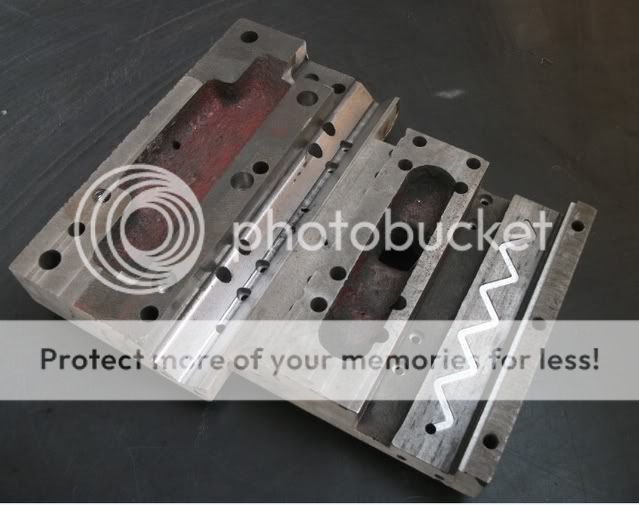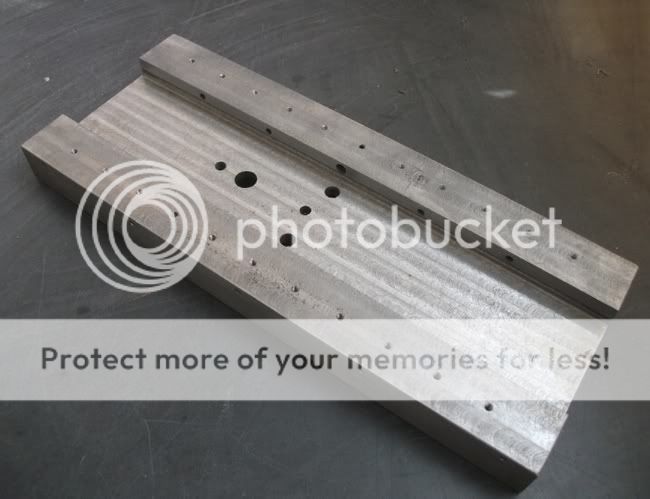521
Show"N"Tell ( Your Machines) / Re: 9x20 Chinese Lathe Conversion
« on: March 08, 2012, 04:35:15 AM »
There was no enough room to put a substantial ball screw in place of the poor leadscrew, so I decided I to put the cross slide on linear guides to have a bit more clearance for the ball nut. On the other hand though, I didn't want to significantly reduce the clearance over the cross slide. I had very low profile Bosch Rexroth preloaded linear guides (10mm high) and I decided to you them, but also had to mill a bit into the cross slide as well as the carriage to achieve the required clearance.
Here is the carriage after milling the recess and drilling the holes for the linear blocks:

Going to mount the linear slides upside down as I figured it would be more convenient, so the carriage will have the linear blocks and guides will be mounted on the cross slide. The mounting holes for the linear blocks got counter-bored from the back:

Also, in the above photo, a lub channel has been milled into the flat sliding surface. The V-groove won't need that as it has a slightly smaller angle than 90° and there is always some clearance between the top of it and the V-guide.
On the left side, milled flat the surface for the Z ball nut assembly to be mounted.
This is the cross slide after milling the recess and drilling and tapping M3 holes for the guides:

Here's a top view, mounting holes for the X ball nut assembly have been drilled and counter-bored:

Will fill the unused holes with epoxy later.
Dan
Here is the carriage after milling the recess and drilling the holes for the linear blocks:

Going to mount the linear slides upside down as I figured it would be more convenient, so the carriage will have the linear blocks and guides will be mounted on the cross slide. The mounting holes for the linear blocks got counter-bored from the back:

Also, in the above photo, a lub channel has been milled into the flat sliding surface. The V-groove won't need that as it has a slightly smaller angle than 90° and there is always some clearance between the top of it and the V-guide.
On the left side, milled flat the surface for the Z ball nut assembly to be mounted.
This is the cross slide after milling the recess and drilling and tapping M3 holes for the guides:

Here's a top view, mounting holes for the X ball nut assembly have been drilled and counter-bored:

Will fill the unused holes with epoxy later.
Dan





